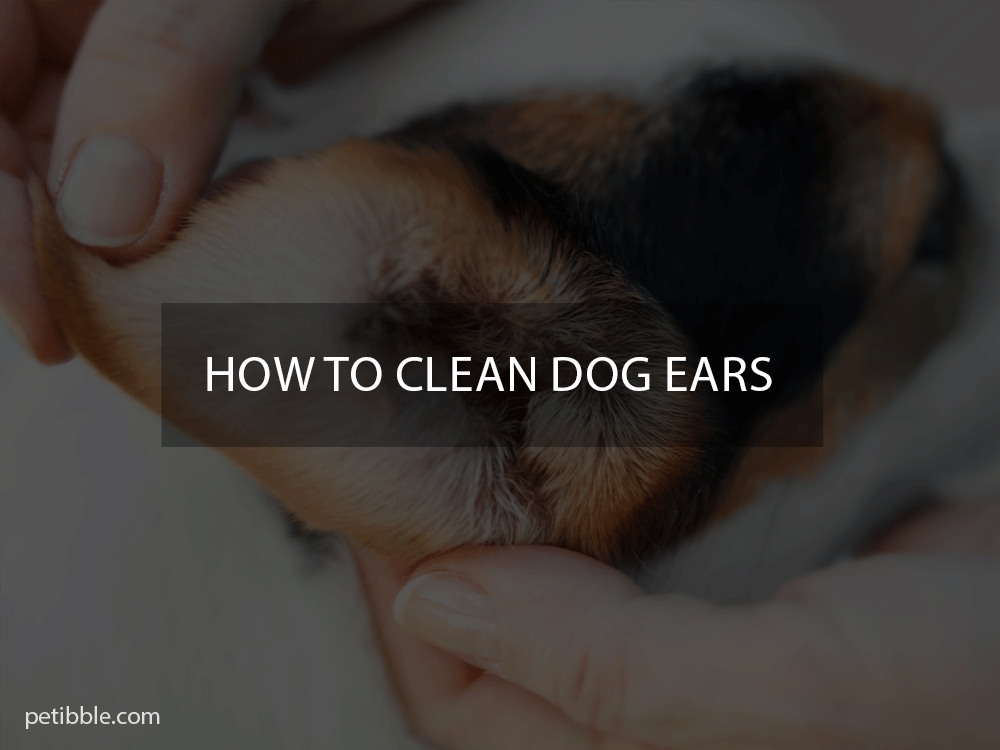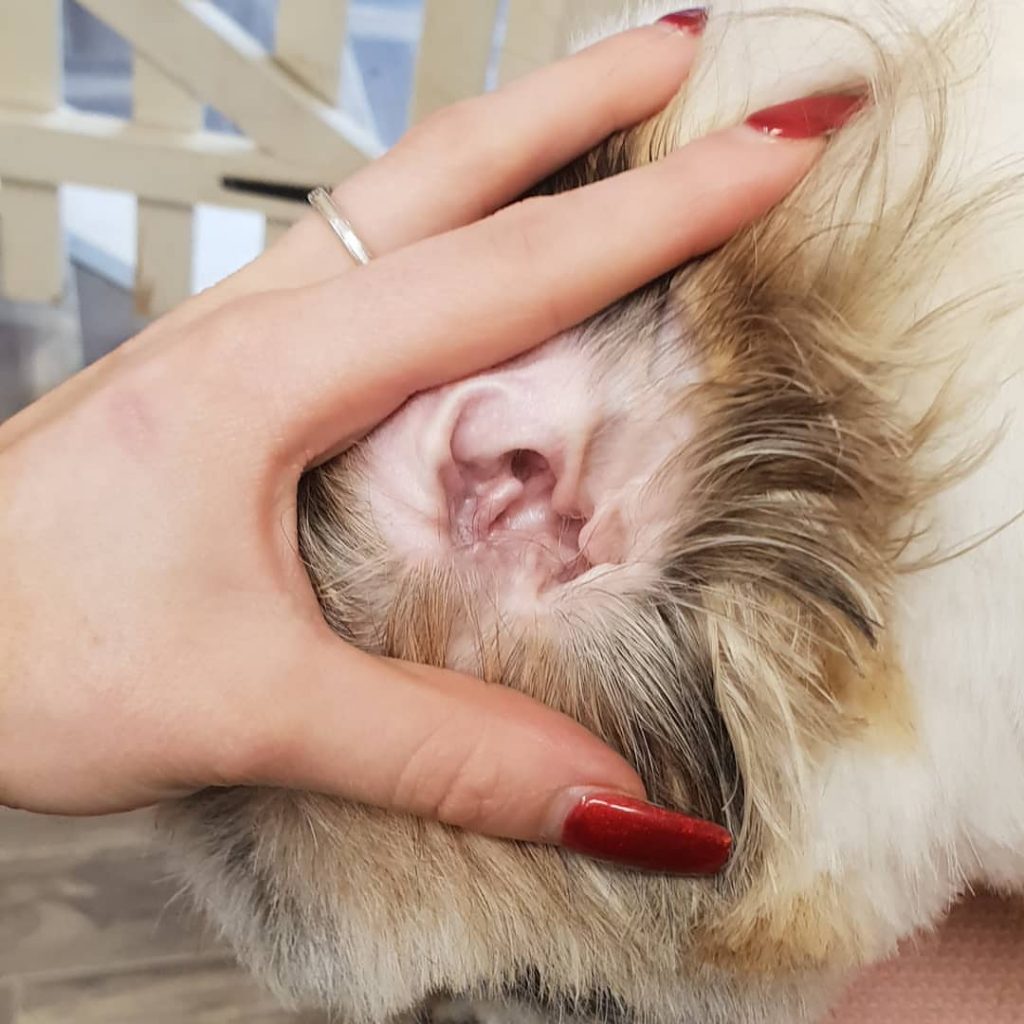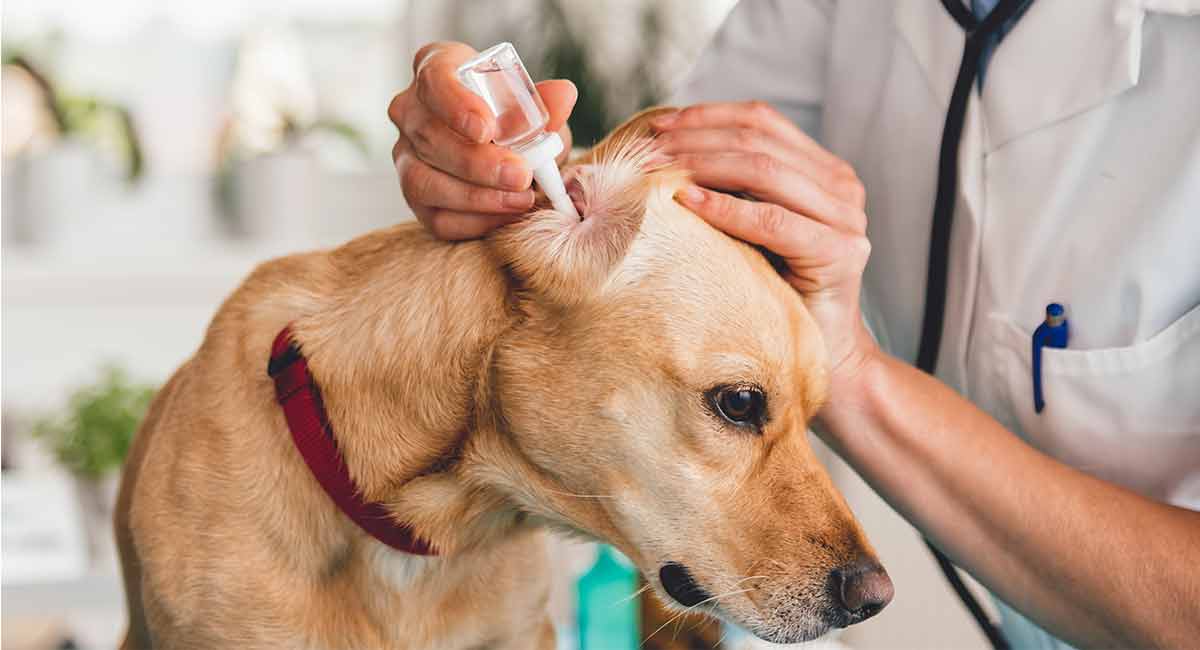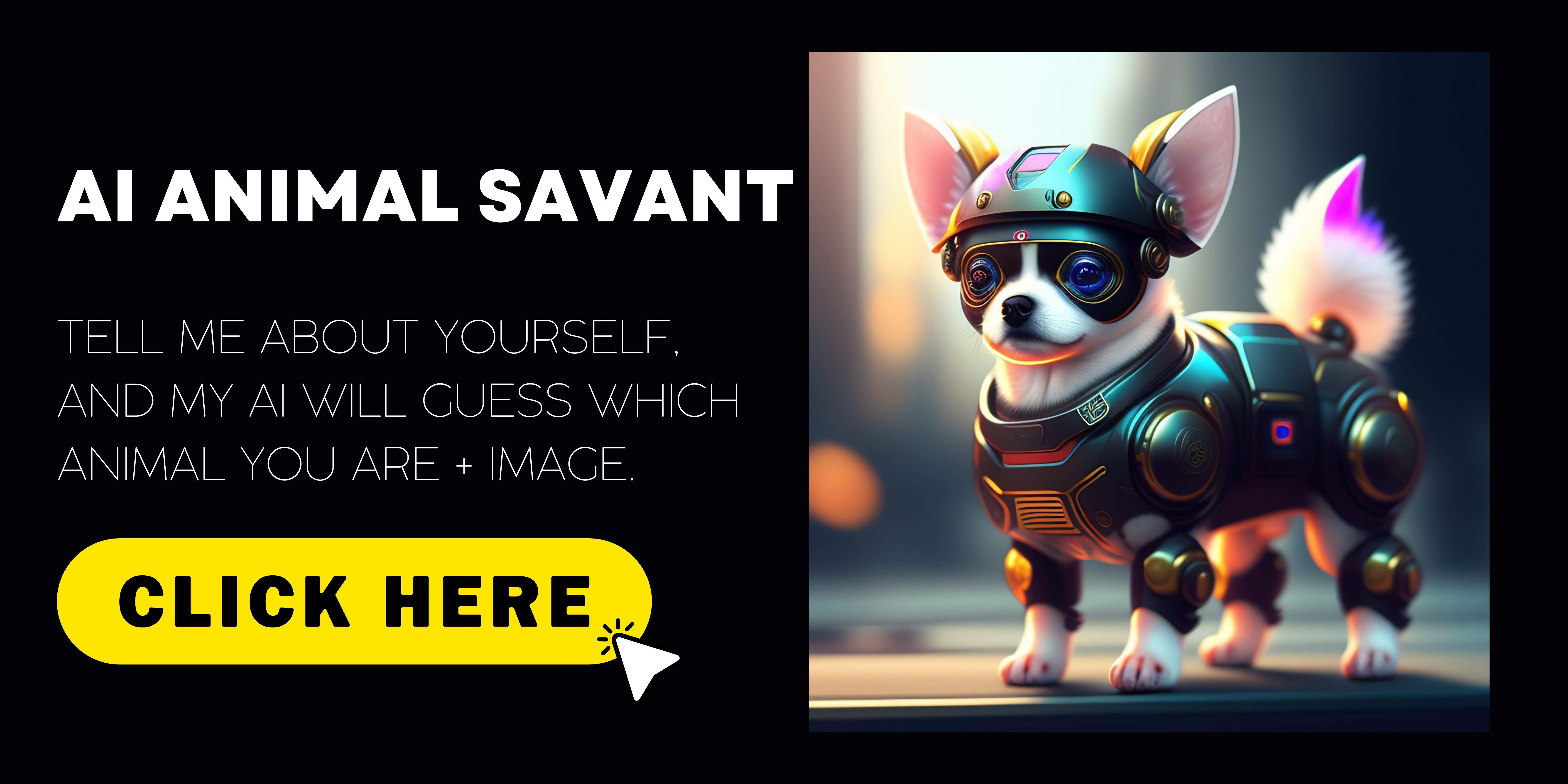How to clean dog ears at home begins with first recognizing that this is not a simple task. The ears are small, delicate, and can easily become irritated when not properly cleaned. The inner ear is extremely soft and should never be exposed to any sharp object. To maintain the health of these sensitive parts, it is important to understand how they work.

When does your dog need ear cleaning?
Depending on the dog breed and dogs ear type it’s different. It can range from weekly cleanings to once every two months or more. It’s the reason it’s so important to talk to your vet to determine which method is best for your pet and how to clean dog ears.
One of the most significant factors is the breed of your dog. Certain breeds of dogs like Cocker Spaniel have big, floppy ear’s that could trap debris or moisture within, placing them at a higher risk of ear irritation and ear infections. Other breeds are susceptible to excessive hair growth in their ear canals. They also have increased ear wax production, allergies, and an extremely narrow ear canal, all of which may require frequent cleaning. Dogs who do not suffer from any of these problems can usually get by with a clean each month for one or two weeks.
Certain pups might not require having their ears cleaned in the first place. In reality, if the dog’s ears are well-maintained and clean, adding cleaning products into the ear canal may cause issues. The ear canal’s of dogs is a small ecosystem. If everything is fine, experts recommend leaving it to themselves. If it’s not broken, don’t fix it!
You may like : blue french bulldog
Cotton balls can cause irritation
It is very likely that at some point, you have heard that using cotton balls to clean dog ears at home can irritate. This is true, especially if the cotton ball is dipped directly into the ear canal. The cotton will cause tiny particles of wax to be dislodged, which will then adhere to the skin of the pup’s outer ear. If this occurs regularly, it could cause severe ear infections. To minimize this possibility, gently wash the pup with a small amount of warm water.
Ear cleaning solution.
Avoid using household products like hydrogen peroxide or vinegar, which could irritate the ear as a cleaning solution. Choose a veterinary-recommended cleaner.
The cleaning solution for the dog ear that you choose must contain a drying element. Cleaning products that do not contain drying agents may cause some dogs to develop an ear infection. Find ingredients such as isopropyl alcohol, acetic acid, and malic acid. Also, look for boric acid and salicylic acid on the label of your cleaner.

For dogs with sensitive skin, you may want to opt for an ear cleanser with ingredients like propylene glycol, lanolin, glycerin, lactic acid, or parachlorometaxylenol, such as Douxo Micellar Dog & Cat Solution. These cleaning products are dry, but gentle on dog ear’s.
Zink works, but be careful.
While it may not be as powerful as peroxide, zinc is still a great ingredient to use. It neutralizes the sulfur odor emitted by many dog ears when moisture builds up in them. However, extreme amounts of zinc in the water could cause diarrhea, so it is suggested that a teaspoon of zinc can be added once per week. Be sure to rinse the ears with warm water after bathing.
you may like: newfypoo vs bernedoodle – which is better?
How to use oxidize?
Oxidizing agents are always a good idea when cleaning a dog’s ears. Unfortunately, excessive oxides can also cause pain and redness, even in small amounts. To avoid this, dilute bleach or lemon juice with one part of water to one part of the soap. Before using the solution, always test a small area first. A simple test can be done by placing a drop of water on the inside of each nostril to see if a stinging sensation arises.
It’s like taking care of our teeth.
Like how we treat our teeth, we can easily apply the same idea to cleaning dog ears. There are simple steps that need to be followed. We have to take our time and gently move the solution from the outer edge of the eardrum to the center. Once this is done, carefully wipe the area with a damp cotton ball and rinse with warm water.

Does your dog need ear cleaner?
First of all, check to ensure that your dog needs ear cleaning. Ear infections and irritation can occur when over-cleaning your dogs ear. Be sure to check that your dog is actually in need of ear cleaning.
While some dogs only require a few ear cleanings a year, others may need them more often, such as dogs with ear problems or who spend time in the water. The Merck Veterinary Manual suggests that the ear canals be kept dry and ventilated. This is done by applying topical astringents to dogs who often swim and by keeping water out of the ear canals when bathing.
Using ear cleaner.
If the ears of your pups are rather sensitive, it will be best for you to leave them alone while cleaning them. Cleaning them too soon may irritate the pup. It would also be best for you to stick to using ear cleaner in small amounts until the pup gets used to the smell. If you find that the pup has an itch inside the ears, gently push it forward until the itch goes away. Do not force the inner ear flap to be opened because you may damage the ear.
You may like : how heavy should my dog be?
Allergy symptoms?
The general belief is that allergies and infections cause how dirty the ears become, but there are some instances when the culprit could be the parasitic worm called the Ring Worm. A vet would need to check the dog ear for any signs of infection or swelling before concluding that the pup has an allergy to it. The presence of a white spot inside the ears may be enough to conclude that the pup has an allergy or irritation. To treat these allergies and other parasitic infections, you should bring the infected canine to a vet for proper diagnosis. Once treated, you can always prevent the recurrence of the infection by following recommended hygiene practices.

Conclusion:
Ear irritations and infections are caused by yeast or an infection known as Thrush. It is generally considered an opportunistic fungal infection. Many different reasons may bring about this type of infection: feeding the yeast with antibiotics, poor hygiene, and allergies.





